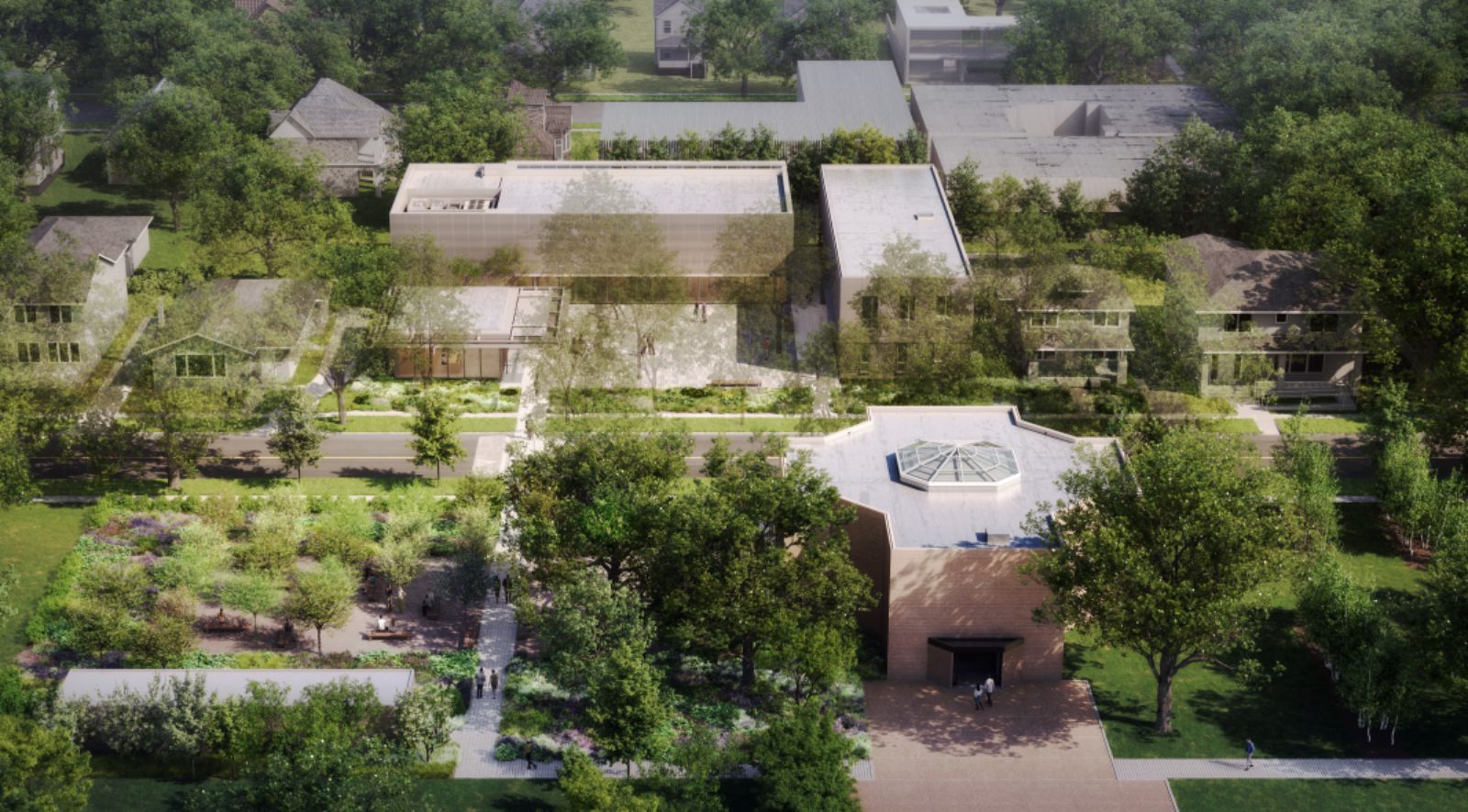The Rothko Chapel broke ground on Phase II of its Opening Spaces campus plan. Introducing flexible, multi-use indoor and outdoor spaces for programming, gathering, and reflection, Phase II will support the Chapel’s dual mission as a space of both contemplation and action.
The project is anchored by a campus plan that focuses on how best to address the ever-increasing interest in, and visitation to, the Chapel, as well as the need to expand its public programming and community engagement. Central to the campus plan are the restoration of the Chapel to its founders’ original intent, the creation of new indoor and outdoor spaces that enhance the visitor experience, and the construction of new buildings that support mission expansion at the intersection of art, spirituality, and human rights.
Grounded in both the singular power of the Chapel building and the unique character of the surrounding early 20th-century residential neighborhood, the new campus architecture and landscape will maintain the de Menils’ vision of situating the sacred within daily life. The 6,600-square-foot Administration and Archives Building will, for the first time, enable public access to the Chapel’s archives and library, with professional staff support.
With a 30-person board room and smaller conference room, the building will also bolster operations and serve as a new home for the Chapel’s administrative team. The new building will support the Chapel as its impact grows, and assist staff in preserving the Chapel’s history for generations to come. Clad in carefully detailed gray wood siding to complement the neighboring 1920s bungalows, the new North Campus buildings will also serve to mediate between the surrounding residential Houston neighborhood and the Chapel itself.
Set back from Sul Ross Street, the 3,800-square-foot Program Center and new public courtyard will establish an interactive link between the South Campus’s contemplative focus and the new North Campus’s more active program. Within the Program Center, a 200-person, multipurpose meeting room equipped with concealed technical infrastructure will support a wide variety of events, including lectures, film screenings, symposia, concerts, receptions, banquets, and workshops.
Its large, shaded glass wall visually connects the daylit meeting room to the new plaza and the Chapel across the street. A gallery space will allow for visual art displays in conversation with annual programming themes. The new Program Center will provide greater capacity and flexibility for the Chapel’s many public events, and allow the organization to broaden and expand its public-facing mission.
The new landscape spaces included in Phase II will complement the architecture and manifest the Chapel’s vision of serving as a meditative and communal commons, creating inviting, flexible, multi-use outdoor spaces for programming, gathering, and reflection. Shaded by new, large oak trees, the North Campus’s central plaza will tie together the new Welcome House, Administration and Archives Building, and Program Center, opening onto Sul Ross Street directly across from the Chapel.
This new space will provide shade, seating, and open areas for outdoor programming. The large glass doors of the Program Center will open onto the courtyard, allowing for programs, meetings, and activities hosted within the Center to engage both indoor and outdoor spaces for conversation and multi-part presentations or performances.
Taken together, all the elements of the Opening Spaces project will greatly improve the visitor experience both within the Chapel and throughout the campus, and strengthen the Chapel’s ability to engage diverse artistic and spiritual mediums in support of those working on the frontlines of social change movements.
The complete project is targeting LEED v4.0 certification, the Administration and Archives Building is targeting LEED Silver, and the Program Center is targeting LEED Gold. Source by Architecture Research Office (ARO) and images Courtesy of KUBANY.
